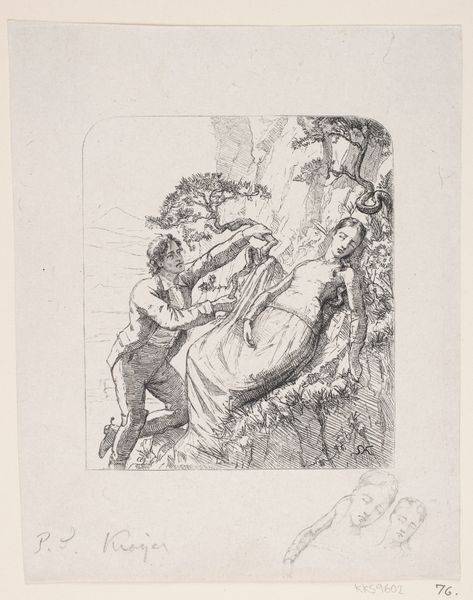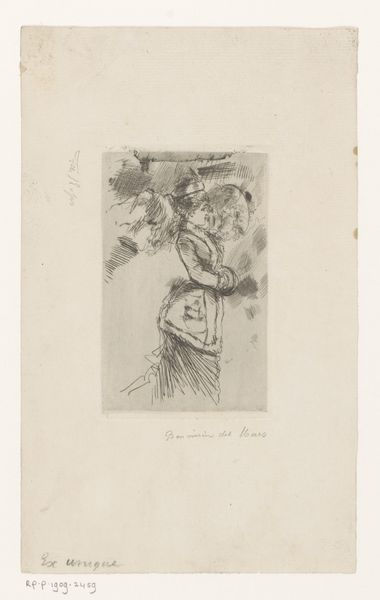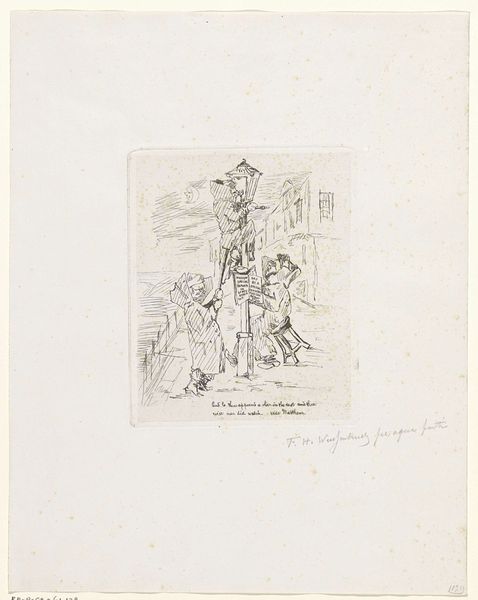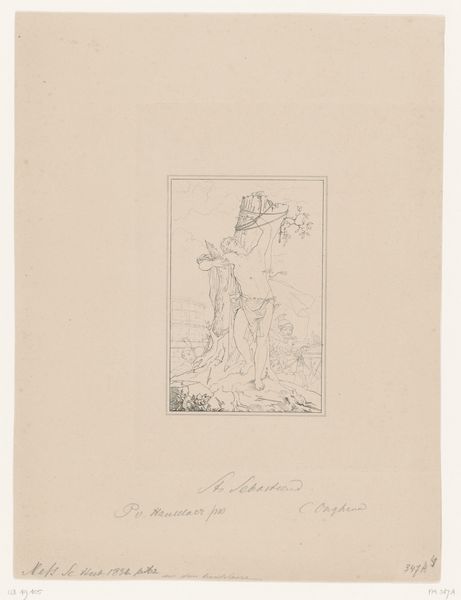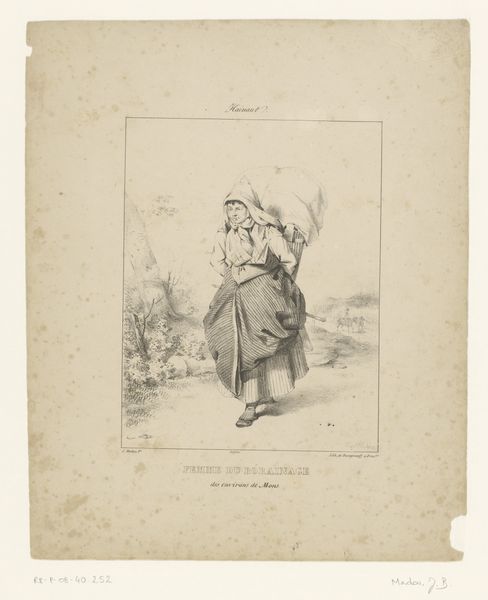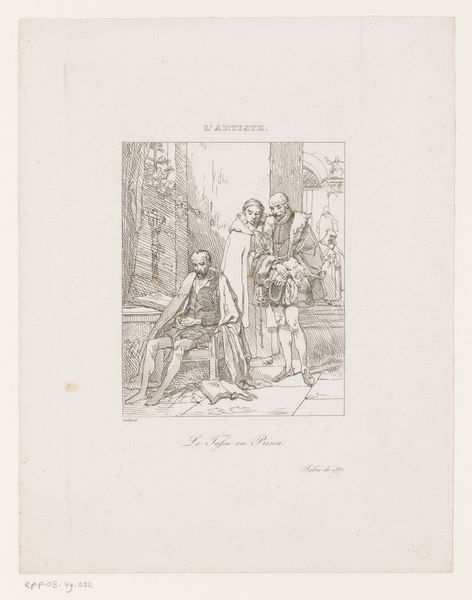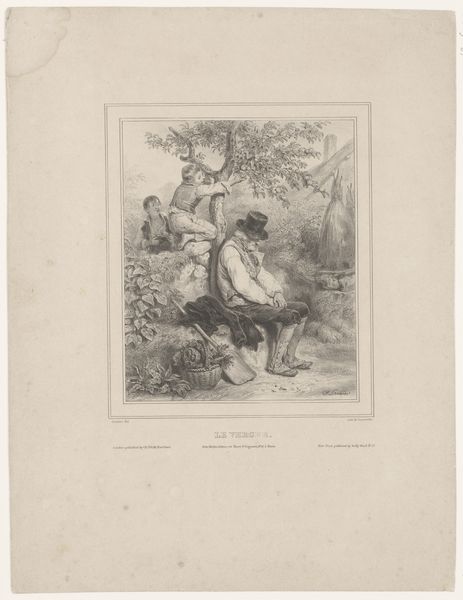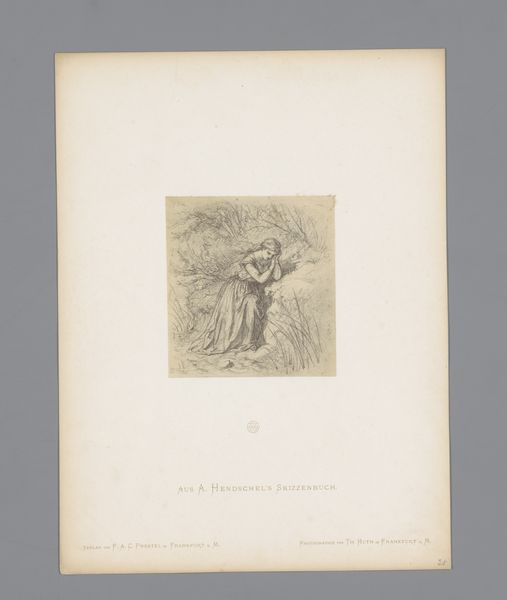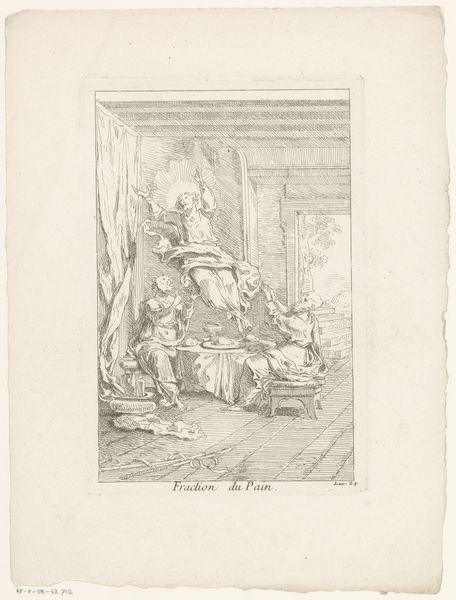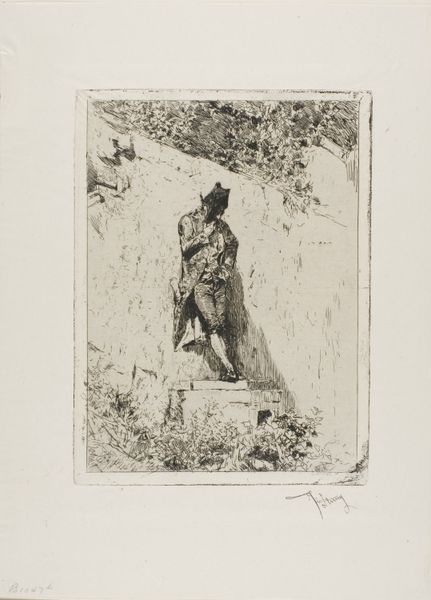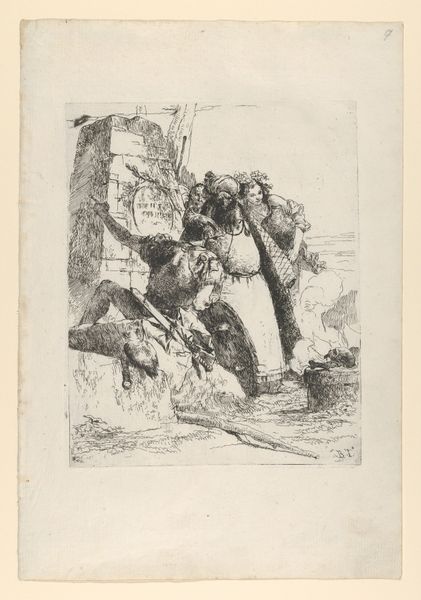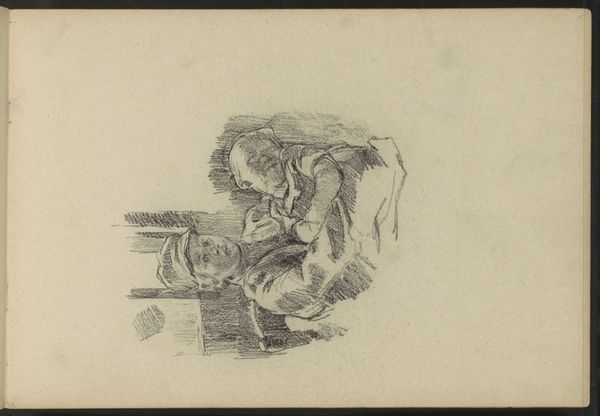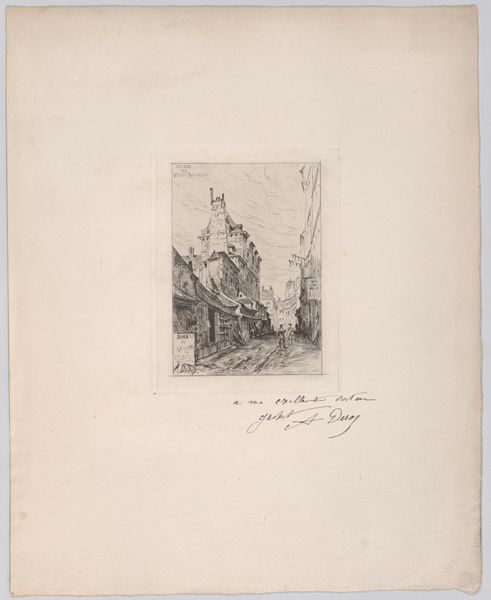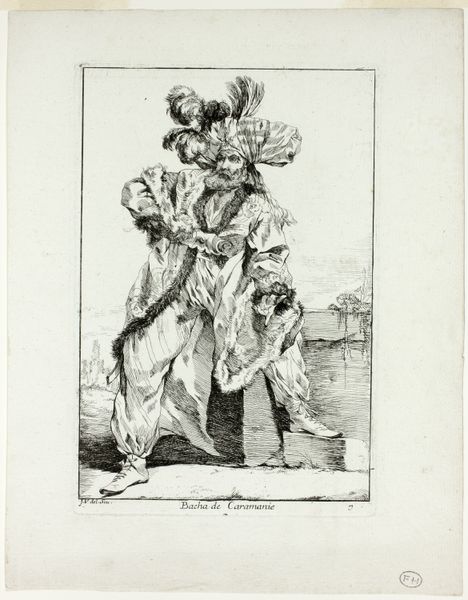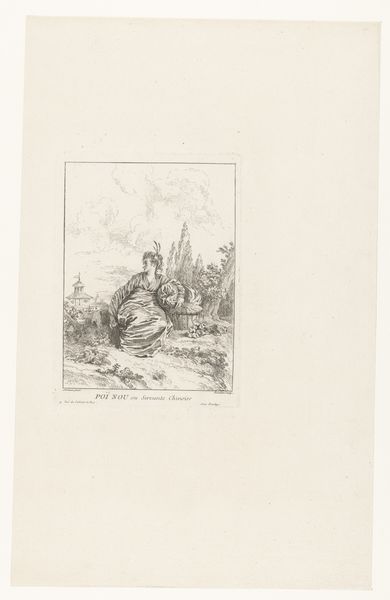
Les Propos de Thomas Vireloque: Bretheren may be, but not cousins 1853
0:00
0:00
Dimensions: 202 × 161 mm (image); 360 × 263 mm (sheet)
Copyright: Public Domain
Paul Gavarni made this print called "Brethren May Be, But Not Cousins" using etching in nineteenth-century France. It depicts a scene of social commentary, reflecting the complex relationship between fraternity and class division. The print invites us to consider the social conditions that shape artistic production and reception. Gavarni subtly critiques the notion of universal brotherhood, suggesting that class distinctions can undermine genuine fraternity. Is it a lament or mockery? In post-revolutionary France, political cartoonists such as Gavarni helped form public opinion, so understanding the nuances of their visual language is vital to understanding the social history of the time. As historians, we might turn to archival sources, such as period newspapers and political pamphlets, to better understand the social context in which Gavarni created his art. By examining the institutional forces that shaped artistic production, we gain insights into the political role of art and its capacity to challenge social norms.
Comments
No comments
Be the first to comment and join the conversation on the ultimate creative platform.
